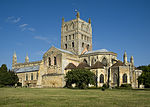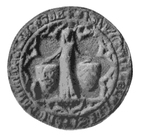River Swilgate
England river stubsGloucestershire geography stubsRivers of GloucestershireUse British English from January 2018Warwickshire Avon catchment

The River Swilgate is a small river that flows through Gloucestershire, England. It is formed by the confluence at Elmstone Hardwicke of the Hyde Brook which flows westwards from Bishop's Cleeve, and Wymans Brook that flows north west through Cheltenham. The Swilgate flows north west and north to Tewkesbury where it joins the River Avon close to its confluence with the Severn.The Swilgate gained some notoriety when New Statesman's issue of 4 January 2013 stated: "The Swilgate, the tributary of the Avon that runs round the southern edge of the town, had overflown its banks four days earlier".
Excerpt from the Wikipedia article River Swilgate (License: CC BY-SA 3.0, Authors, Images).River Swilgate
Gloucester Road,
Geographical coordinates (GPS) Address Phone number Website Nearby Places Show on map
Geographical coordinates (GPS)
| Latitude | Longitude |
|---|---|
| N 51.9888 ° | E -2.1657 ° |
Address
Mill Avon Holiday Park
Gloucester Road
GL20 5SW , Priors Park
England, United Kingdom
Open on Google Maps










